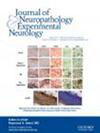ZCCHC17 knockdown phenocopies Alzheimer’s disease-related loss of synaptic proteins and hyperexcitability
IF 3.2
3区 医学
Q2 CLINICAL NEUROLOGY
引用次数: 0
Abstract
ZCCHC17 is a master regulator of synaptic gene expression and has recently been shown to play a role in splicing of neuronal mRNA. We previously showed that ZCCHC17 protein declines in Alzheimer’s disease (AD) brain tissue before there is significant gliosis and neuronal loss, that ZCCHC17 loss partially replicates observed splicing abnormalities in AD brain tissue, and that maintenance of ZCCHC17 levels is predicted to support cognitive resilience in AD. Here, we assessed the functional consequences of reduced ZCCHC17 expression in primary cortical neuronal cultures using siRNA knockdown. Consistent with its previously identified role in synaptic gene expression, loss of ZCCHC17 led to loss of synaptic protein expression. Patch recording of neurons shows that ZCCHC17 loss significantly disrupted the excitation/inhibition balance of neurotransmission, and favored excitatory-dominant synaptic activity as measured by an increase in spontaneous excitatory post synaptic currents and action potential firing rate, and a decrease in spontaneous inhibitory post synaptic currents. These findings are consistent with the hyperexcitable phenotype seen in AD animal models and in patients. We are the first to assess the functional consequences of ZCCHC17 knockdown in neurons and conclude that ZCCHC17 loss partially phenocopies AD-related loss of synaptic proteins and hyperexcitability.ZCCHC17 基因敲除可表征阿尔茨海默病相关的突触蛋白缺失和过度兴奋
ZCCHC17 是突触基因表达的主调节器,最近被证明在神经元 mRNA 的剪接中发挥作用。我们以前的研究表明,阿尔茨海默病(AD)脑组织中的 ZCCHC17 蛋白会在出现明显的胶质细胞增生和神经元缺失之前减少,ZCCHC17 的缺失部分复制了在 AD 脑组织中观察到的剪接异常,而 ZCCHC17 水平的维持预计会支持 AD 的认知恢复能力。在这里,我们使用 siRNA 敲除技术评估了 ZCCHC17 在原代皮质神经元培养物中表达减少的功能性后果。与之前确定的 ZCCHC17 在突触基因表达中的作用一致,ZCCHC17 的缺失导致了突触蛋白表达的缺失。神经元的贴片记录显示,ZCCHC17 的缺失极大地破坏了神经传递的兴奋/抑制平衡,并有利于兴奋主导的突触活动,具体表现为自发兴奋性突触后电流和动作电位发射率的增加,以及自发抑制性突触后电流的减少。这些发现与注意力缺失症动物模型和患者的过度兴奋表型一致。我们首次评估了神经元中敲除 ZCCHC17 的功能性后果,并得出结论:ZCCHC17 的缺失部分表征了与 AD 相关的突触蛋白缺失和过度兴奋。
本文章由计算机程序翻译,如有差异,请以英文原文为准。
求助全文
约1分钟内获得全文
求助全文
来源期刊
CiteScore
5.40
自引率
6.20%
发文量
118
审稿时长
6-12 weeks
期刊介绍:
Journal of Neuropathology & Experimental Neurology is the official journal of the American Association of Neuropathologists, Inc. (AANP). The journal publishes peer-reviewed studies on neuropathology and experimental neuroscience, book reviews, letters, and Association news, covering a broad spectrum of fields in basic neuroscience with an emphasis on human neurological diseases. It is written by and for neuropathologists, neurologists, neurosurgeons, pathologists, psychiatrists, and basic neuroscientists from around the world. Publication has been continuous since 1942.

 求助内容:
求助内容: 应助结果提醒方式:
应助结果提醒方式:


